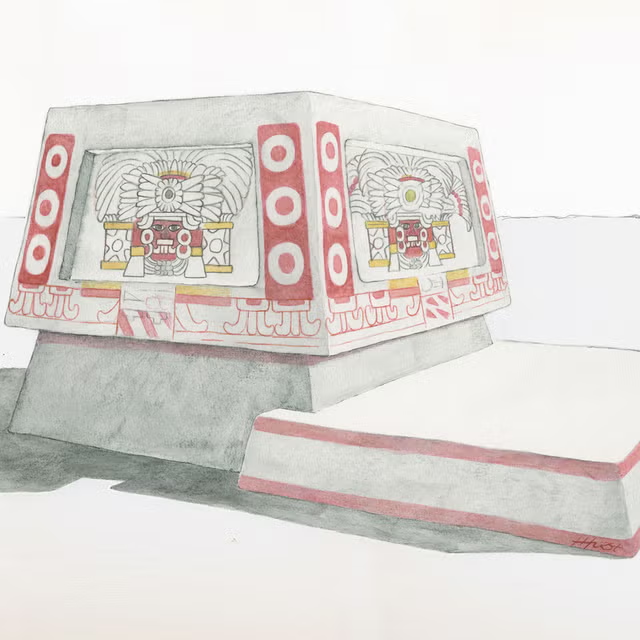Archaeologists in Guatemala have made a groundbreaking discovery that challenges our understanding of two ancient civilizations: the Maya and Teotihuacan. A 1,700-year-old altar, found in the heart of the Maya city of Tikal, reveals an unexpected connection between these two cultures.
According to researchers from Brown University, who published their findings in the journal Antiquity, the altar is a clear example of Teotihuacan-style architecture, which was brought to Tikal by individuals with strong ties to this distant culture. This suggests that there was more to the “cosmopolitan character” of Tikal than just art.
The limestone altar measures about 3.5 feet by 6 feet and features original murals in red, yellow, and black, depicting a figure resembling the Storm God. This design follows the Teotihuacan tradition of altars dedicated to deities instead of rulers, which was a common practice in Maya culture.
Experts agree that it wasn’t the work of a Maya artist but an artisan trained in Teotihuacan. The presence of this altar implies a relationship between the two cultures that spanned over 600 miles and involved a significant amount of cultural exchange.
The study also suggests that wealthy leaders from Teotihuacan came to Tikal and created replicas of ritual facilities that would have existed in their home city, leaving a heavy imprint on the Maya culture. The experts believe that there was more to this “cosmopolitan character” than just art and that it may have involved an element of occupation or surveillance.
The discovery raises questions about the relationship between the two cultures and the possible conflicts that may have occurred between them. As one of the authors, Stephen Houston, said, “It’s almost as if Tikal poked the beast and got too much attention from Teotihuacan.” This statement highlights the complex feelings that the Maya people had towards Teotihuacan.
In conclusion, this discovery provides valuable insights into the lives of these ancient civilizations and sheds light on their relationships with each other. The presence of the Teotihuacan-style altar in Tikal suggests a more nuanced understanding of cultural exchange and its impact on the development of civilizations.
Source: Popular Mechanics




